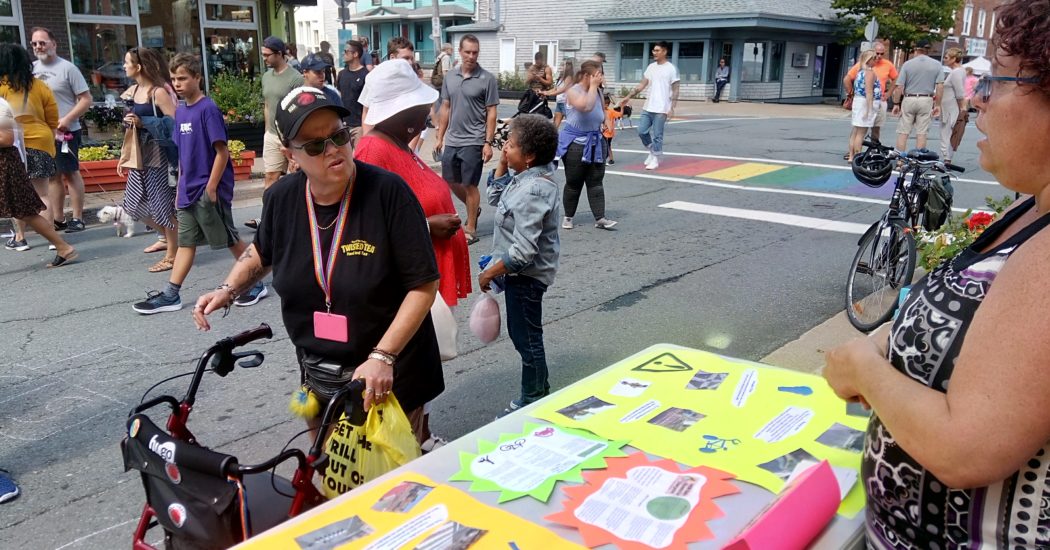KJIPUKTUK (Halifax) – The recent death in broad daylight of a 74 year old woman lawfully using a crosswalk on Dunbrack Street marks the ninth pedestrian over 50 years old killed in Halifax since the beginning of January 2018. Seven of those nine fatalities were 60 or older.
Meanwhile Halifax Regional Municipality (HRM) has released its clearest intent yet of doing nothing to shift the burden of our dangerous roads from the most vulnerable users.
HRM’s new road safety webpage states:
“Road safety is a shared responsibility for all travellers – whether walking, driving, rolling or cycling”
It explains how “Heads Up Halifax” will now raise awareness year around through education programs. Nothing about its commitment to infrastructure changes, the foundation of the Swedish Vision Zero road safety program approved within our Integrated Mobility Plan in 2017.
There are very few seniors who walk in the Clayton Park area where the unnamed 74 year old woman was struck and killed on 18 February because the main roads and crosswalks are fundamentally unsafe for pedestrians.
Suburban artery roads in Halifax like Dunbrack are built to shift large volumes of car traffic. Because they’re nearly always well below their potential capacity, speeding is normal. Crosswalks are unsafe because the overall design and infrastructure priority remains with minimal disruption to traffic flow, not pedestrian safety.
Despite the obvious dangers to those most at risk from dangerous infrastructure and multiple-lane urban highways, HRM insists responsibility is placed on those least able to shoulder it.
The family of Wray Hart, the Halifax man killed by a speeding drunk driver, know from bitter personal experience why pedestrians are most at risk. Wray’s sister, Betty Kerr, released this recent statement on her brother’s memorial page after being struck by a driver and seriously hurt in January:
Hey Wray, I am home now still broken bones on cast number 3 can’t go out can’t get up the stairs the broken pelvis and right hip are just burning the busted hand full of steel rods and plate, no words can describe pain of nerves reconnecting. March 18 next visit to see if everything is healed yet
If our recent losses of life on HRM roads have taught us anything, it is this: We either have no idea how to protect vulnerable road users, or we aren’t willing to change the status quo and enact new priorities on our roads.
We don’t need to redesign our roads to make them safer for all. We do need to identify the right safety countermeasures in the right places where vulnerable road users are most exposed to danger and hit most frequently. In HRM, for pedestrians and cyclists this is very often at intersections – see page 7 of our road safety “plan”.

If you’re affected by dangerous roads and crosswalks, please write or meet with your councillor and request they intervene urgently.
Leadership must acknowledge that HRM is moving towards 20% more vulnerable road user fatalities, not 20% less as claimed in our “Towards Vision Zero” road safety target.
Councillors can declare a road safety crisis and hold emergency meetings with all relevant staff and decision makers. They could also approve a proposal and budget to instruct external specialist consultant engineers who have a proven track record with implementing a Vision Zero safety plan.
Most of all, leadership must step up, take responsibility, and publicly acknowledge that the proven Vision Zero ethos requires an effort led from the top to improve the safety of vulnerable road users, not from vulnerable road users themselves. Senior pedestrians trying to navigate dangerous roads and crosswalks are not the issue or the cause of danger on our urban roads
If you walk, cycle or use a wheelchair and are affected by road safety issues, please join HRM Safe Streets for Everyone. If your local crosswalk needs a crosswalk flag, please contact the Crosswalk Safety Society. Please remember to report issues affecting your safety to our municipal authorities using the 311 service.
With a special thanks to our generous donors who make publication of the Nova Scotia Advocate possible.
Subscribe to the Nova Scotia Advocate weekly digest and never miss an article again. It’s free!



